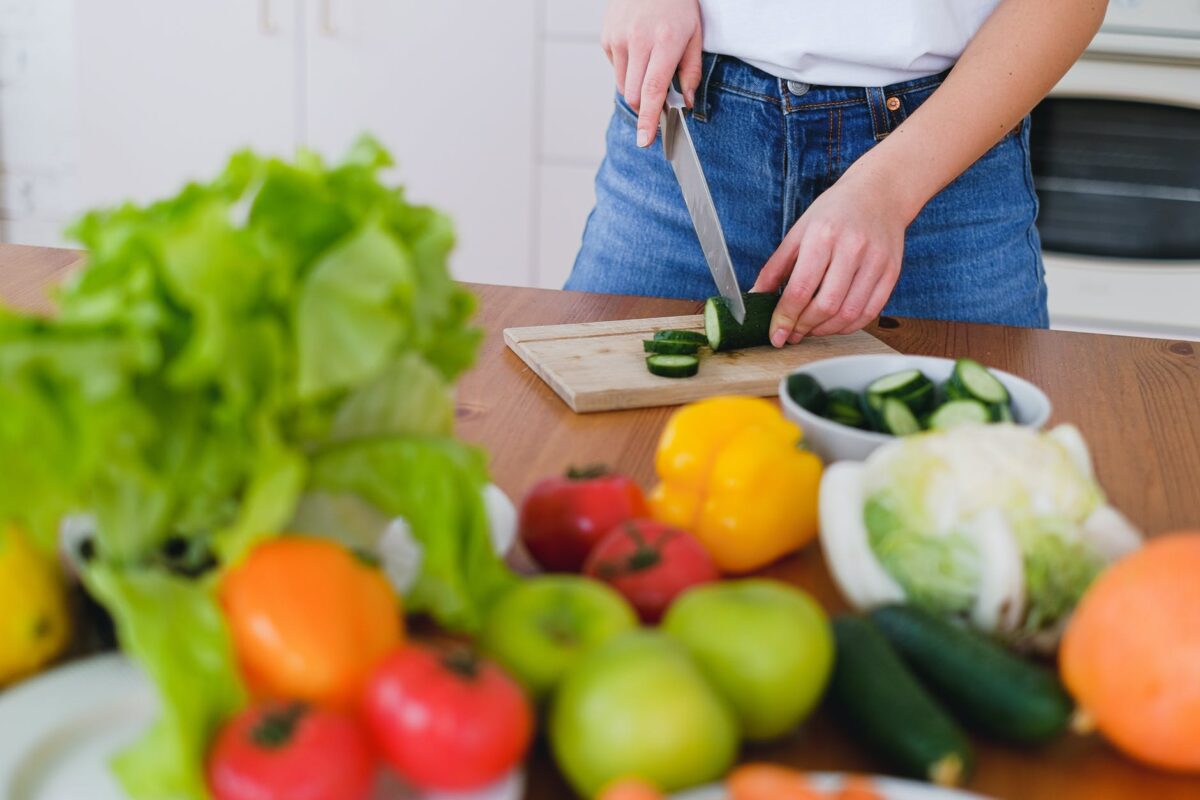Tonics and Elixirs: 14 Powerful Potions for a Shot of Health

This blog post contains some affiliate links to resources you may find useful, at no extra costs to you. All opinions are my own.
You hear it all the time: food is medicine.
And it’s true, good nutrition can support your health in many ways. Eating a wide variety of unprocessed foods will provide you with the vitamins, minerals and other nutrients your body and mind need to function well. What’s more, herbs, spices and adaptogens are used all over the world to reduce or manage symptoms better. And of course, you’ll lower your chances of further health problems when you limit your intake of alcohol, sugar and trans fats.
But putting a healthy meal on the table is easier said than done when you live with chronic illness. Fatigue and pain can stop you from being able to cook, while opening cans with rheumatoid arthritis or standing behind the stove when you have POTS may be a mission impossible.
Of course you don’t always have to spend much time in the kitchen for a nourishing dinner. Maybe your partner or housemates enjoy cooking, or you could use meal delivery services. But if you don’t have a family and big budget, or you follow a specific medical diet, then making your own meals can be key for your health.
So what can you do to make healthy cooking easier when you’re tired, in pain or dealing with symptoms?
Take a look at these 9 tips and tools for healthy cooking with chronic illness.

What’s more comforting when you’re sick than a warm bowl of soup, chili or stew? With a slow cooker, you simply place your chopped ingredients in the pot in the morning and leave them to simmer unattended until dinnertime (after checking safety instructions of course). Great for busy people as well as those of us with chronic illness.
Another advantage of slow cookers is that it turns affordable staple foods like root vegetables, legumes and tougher cuts of meat into tasty, nourishing meals. Depending on the size of your pot and your household, you can also easily make a large batch of braised beef ragu, chicken curry or lentil soup to store in the fridge or freezer for later.
So if you’d also love to save yourself time, energy and money, it’s worth investing in a slow cooker and mastering a few healthy slow cooker recipes.
Sheet pan dinners are another example of hands-off cooking. You don’t have to monitor hot pans, you can relax or set the table while your large tray with meat, fish or tofu, vegetables and potatoes roasts in the oven. And – not unimportant – there’s little clean-up!
More so, because you often have separate components on the baking tray, sheet pan dinners are an easy way to cook one meal that pleases both vegetarians, Paleo lovers and picky eaters.
Check out these 10 nutritious one-tray meals to get you started or learn the most flavorsome combinations from The Healthy Sheet Pan Cookbook.
Healthy cooking is not just about making dinner, but other nutritious meals during the day too. And that’s when a blender can come in handy. In minutes, you can turn simple ingredients into green smoothies, protein shakes, soups or veggie spreads. Blended meals are also easy to eat and digest when you don’t feel well.
What’s more, you can pack in lots of nutrient-rich foods without compromising on taste. Smoothie bowls, for example, are a great way to sneak in healthy protein, hidden veggies and superfoods like turmeric, chia seeds and maca. And comforting soups make it so much easier to get plenty of vegetables in, as well as health-boosting herbs and spices.
For more helpful tips, take a look at ‘The Blender Girl’ cookbook with 100 gluten-free and vegan recipes anyone can whip up fast.

Do you want to put up a healthy meal under 15 minutes? Then a wok may be the ideal kitchen tool for you.
Stir-frying is a quick, high-temperature cooking method with endless variations. You simply drizzle healthy oil in the wok, add garlic or ginger and then sauté the protein of your choice, crunchy vegetables and brown rice or buckwheat noodles if you like. Finally, flavor your stir-fry with fresh coriander, sesame seeds or peanuts, miso or soy sauce.
It’s easiest if you buy chopped veggies and meats, but if that’s not an option for you, make sure you cut everything in similar sized cubes. And as a bonus, you only have one pan to clean (although a wok may be heavy to lift for some people with chronic pain).
If that sounds good to you, get yourself a PFAS-free nonstick wok and start experiment with these free healthy stir-fry recipes from Well Plated by Erin.
Healthy cooking with chronic illness can be challenging, with different obstacles for different diseases. It can be helpful to pinpoint your biggest problem in the kitchen and search for helpful gadgets to work around it.
If you struggle with opening jars and cans or peeling apples and potatoes, an electronic can opener and palm peeler will come to your rescue. And OXO Good Grips kitchen utensils, for example, have a special ergonomic design with a non-slip grip, whereas a rocker knife comes with two handles and a curved blade, allowing you to rock side to side to slice fresh produce and proteins.
When fatigue and pain make cooking hard, you can get a stool into the kitchen so you can sit down while stirring pots and pans. You could also invest in a high-quality food processor to make chopping, slicing, kneading and mixing easy and painless. Experiment which supportive aids work best for your situation.

Even if you rock planning and pacing, there will always be days when you need to quickly whip up a nourishing meal, even though you’re exhausted, dizzy or trembling. That’s when mastering a few quick recipes comes in handy.
As mentioned earlier, stir-frying is a great option, but fresh pasta and couscous also cook under 10 minutes. You could also consider easy quesadillas, a vegetable omelet or shrimps with snow peas for a quick but healthy dinner.
Use cooking short cuts like buying one-minute rice and frozen prepped vegetables, boiling water quickly and unattended with an electric kettle or steaming veggies in the microwave to reduce the time and energy you spend in the kitchen.
Who says you have to cook from scratch each night? With a little meal planning, you can cook once and eat twice. And you don’t necessarily have to eat the exact same meal two days in a row.
Make a large batch of 7-veg tomato sauce for your favorite pasta the first day, and use the leftover sauce for a quick burrito, easy ratatouille or shaksuka the next day(s). Cook extra potatoes, so you can whip up a Spanish tortilla with eggs and peas tomorrow. You could also grill vegetables and have them once with beef, chicken or salmon, and eat with rice or quick-cooking polenta later that week.
Prepping one component that you can use in several meals gives you the variety and flexibility you may need, but still saves you work.

Freezer meals ensure you can put a nourishing dinner on the table, even when you feel too sick to cook. Like the ‘cook once, eat twice’ strategy, you cook a double batch of food (or more!) to be stored in the freezer instead of the fridge. You can prep meal components, like pasta sauces and taco fillings, or entire dinners, such as casseroles.
There are tons of freezer meal strategies and recipes online, from vegetarian and Paleo to healthy meals for anytime of day. Just be mindful of hygiene rules when freezing, defrosting and reheating.
Do your energy levels and symptoms change much from day to day? Then you might feel most comfortable meal prepping for the entire week on days when you feel relatively good.
When meal prepping for the week ahead, it can be helpful to work with a dinner template, whether that’s a well-balanced weekly menu or theme days like Taco Tuesdays and soup on Sundays. If meticulous meal planning doesn’t work well for you, you could also roast one or two whole chickens to use in several dinners or lunches throughout the week. Fill another oven tray with a large batch of baked potatoes and sweet potatoes, and chop a variety of veggies while the oven does its job. These relatively easy meal preparations help you set up for days of healthy meals.
Some people also include breakfasts, lunches and snacks in their meal prepping. Having overnight oats, smoothie packs, salads in jars or homemade trail mix for grabs can come in handy if fatigue and pain make it hard to stick to a healthy diet.
You can find helpful guides on how to batch cook for the entire week on Nutrition Stripped, Wellness Mama and Eating Well.
There will always be days when you’re simply too sick to make your own meals, and that’s ok. But hopefully these tips will give you some ideas on how you can put a nourishing meal on the table to support your health, even when you’re tired and in pain.
I’d love to know, what are your best tips and tricks for healthy cooking with chronic illness?
If you enjoyed reading this article, you might also like: